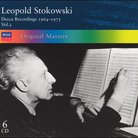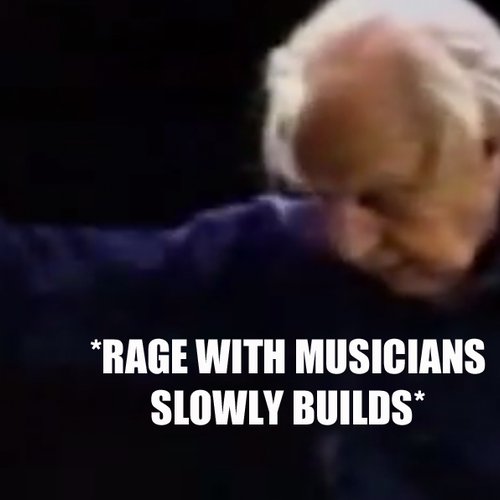Did you know this controversial 20th century conductor inspired Back to the Future’s Doc Brown?
20 October 2024, 11:20 | Updated: 20 October 2024, 11:29

Great Scott! One of Christopher Lloyd’s childhood classical influences is laid bare in the science fiction comedy franchise…
Listen to this article
In 1985, the film Back to the Future introduced us to Marty McFly (Michael J Fox) and Doc Brown (Christopher Lloyd), a teenager and an eccentric scientist who find themselves time travelling in a DeLorean and causing havoc to Marty’s future.
Since then, the film and its sequels, Back to the Future Part II and Part III, have become cult classics, spawning theme park rides, a musical, the assurance that a red body warmer will never go out of fashion and the perennial hope that hoverboards will become a regular transport reality.
And that iconic image of Lloyd as Doc, with his shock of white hair? It was due in part to Albert Einstein, and in part to conductor Leopold Stokowski.
Lloyd recalled to the Philadelphia Enquirer in 2016, “There was a classical conductor named Leopold Stokowski who was the conductor of the Philadelphia Orchestra. He made innovations in the way he approached classical music. I grew up in a classical milieu, I grew up around a lot of classical musicians.
“I heard a recording on the radio of Gustav Holst, a British composer, called The Planets. Leopold Stokowski conducted it, and on the cover of the record album was a picture of him conducting and swirling around him was the solar system. He had long hair and his whole presence was that ... I wish I knew him. That record album was very inspiring.”
So Lloyd approached the film’s director, Robert Zemekis, about basing Doc on this man.
“He said ‘do it!’” said Lloyd. “So I did!” and speaking to Parade magazine, Lloyd said both Stokowski and Einstein were “people that I’m kind of awed by, and it was a lot of fun to have that look”.

Who was Leopold Stokowski, and what’s his musical legacy?
Leopold Stokowski was born in London on 18 April 1882, and trained at the Royal College of Music and Queen’s College, Oxford. He was an organist in the capital before the growing musical opportunities in America saw him secure a position in New York, where he networked like crazy, and charmed a few high society ladies in the process (he married three times in his life).
In 1909, he applied for the position of conductor at the Cincinnati Symphony, and despite his relative lack of experience, he was hired. He earned high praise, but after three years and a fall-out with the orchestra’s board of directors, he was released from his contract early and caused a scandal by joining the Philadelphia Orchestra as music director.
We’ll never know the real story with Cincinnati. But in Philadelphia, Stokowski was ‘home’, and his tenure with the orchestra is cited as one of the greatest eras of American musical history.
Stokowski was given freedom to do things his way. He spurned the traditional baton for freehand conducting, changed where the orchestra sat and introduced free bowing in the strings, rather than unison up and down movements, creating what became the distinctive ‘Philadelphia sound’. He introduced youth concerts and performed contemporary works, everybody loved ‘Stoki’; he toured and recorded extensively, appeared in films, and in 1936, a chance meeting with Walt Disney led to the creation of Fantasia, for which he was the conductor – he got to shake Mickey Mouse’s hand.
Read more: Why are orchestras arranged the way they are?

But he again fell out with the orchestra’s board of directors, and finally left Philadelphia in 1941, going on to form the All-American Youth Orchestra, conduct the NBC Symphony from 1941 to 1944 with Arturo Toscanini and directing the newly formed New York City Symphony Orchestra, where he inaugurated low-priced concerts.
Another argument with the board of directors saw him move on again, this time to go and found the Hollywood Bowl Orchestra in Los Angeles – but he was looking for something big and long term, which he eventually found in 1955 with the Houston Symphony. Stokowski was there for six years, catapulting the orchestra to new heights, but as you’ve come to expect by now, there was a disagreement with the orchestras board of directors – and off he went.
So at the age of almost 80, he formed another new orchestra, the American Symphony, and was so happy to have an outfit in New York to call his own. He took no fees, insisted ticket prices were kept low, encouraged young people to attend concerts and sometimes paid the ensemble’s debt from his own pocket. He was so contented, he even agreed to guest conduct the Philadelphia Orchestra!
But then, he went home.

Leopold Stokowski conducts Tchaikovsky (vaimusic.com)
He returned to England in 1972, with a view to conduct the major orchestras in London and keep going to his 100th year. He fell short by five, passing away in 1977 at the age of 95.
Stokowski is remembered for being controversial. He was stubborn, non-traditional, and sometimes criticised for having style over substance. But it’s undeniable that he made orchestral music popular and his influence is still being felt today, not least because Stokowski laid the foundation for thousands of youth orchestras around the world. Back to the Future has left an indelible mark on audiences worldwide, something Christopher Lloyd finds “extremely gratifying, as it seems to have the same attraction to young people, as when it first came out”.
As we revisit the adventures of Marty and Doc on 21 October, designated Back to the Future Day, as it’s the date in which Marty McFly traversed the space-time continuum in Back to the Future Part II, we’re reminded that genius –whether in art or time travel – often springs from the bold, the eccentric, and the dreamers, who dare to reshape the world around them.




